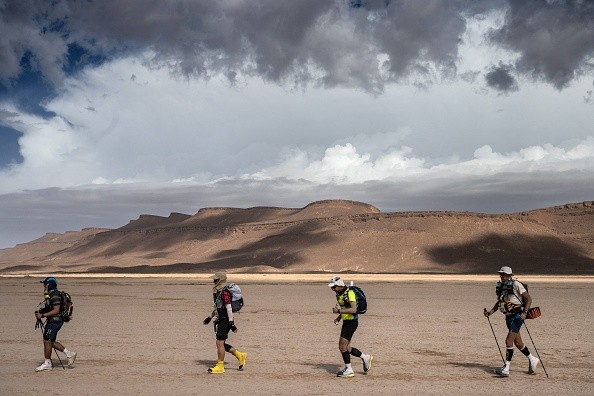Deserts may appear barren and inert, but they are alive and thriving. Sand dunes, in an instance, develop and move, and they breathe moist air, according to a decades-long scientific endeavor.
The discoveries reveal for the first moment how moisture penetrates granules and grain, and they might have far-reaching implications beyond the desert, including medicinal research, agricultural and food processing, and interplanetary exploration.
Desert 'breathing'
 (Photo : JEAN-PHILIPPE KSIAZEK/AFP via Getty Images)
(Photo : JEAN-PHILIPPE KSIAZEK/AFP via Getty Images)

To measure matter with heightened sensitivity, lead author Michel Louge, a professor of mechanical and aerospace engineering at Cornell University, created capacitance probes, which use multiple sensors to record everything including saturation solubility to velocity to moisture content with unparalleled spatial resolution.
Within the early 2000s, Louge began working with Ahmed Ould el-Moctar of the University of Nantes in France using the probes to investigate the water content in dunes to truly comprehend the procedure by which agricultural fields turn into deserts - an interest that has only grown more pressing with the rise of global climate change, as per ScienceDaily.
The probe finally demonstrated how permeable sand is, with a little quantity of air leaking through it. The previous study had suggested that this form of seepage existed in dunes, but no one had been able to verify it until now.
This "breathing" is what permits bacteria to survive deep into hyper-arid sand dunes despite the high temperatures. For the last decade, Louge has worked with Anthony Hay, an associate professor of microbiology at Cornell, to investigate how bacteria might help stabilize dunes and keep them from intruding on roadways and infrastructure.
Louge and his colleagues also discovered that desert surfaces exchange less liquid with the atmosphere than previously thought and that evaporation of water from single sand grains works like a sluggish chemical process.
The majority of their data was collected in 2011, but it took Louge and his colleagues another decade to make sense of some of the discoveries, such as discovering surface disturbances that induce evanescent, or nonlinear forces.
Read more: Mysterious Black Glass in Chilean Desert Caused by Exploding Comet Thousands of Years Ago
Reversing the desert in Arizona
Liquid water able to stream northeast into Arizona from the Gulf of California compresses into larger and larger droplets until they are too heavy to remain in the air at about 2,500 feet above the ground.
When thousands become one, a drop falls to the ground.
The plummet freefalls for two to seven minutes, reaching speeds of up to 20 mph before impacting the surface.
The effect is subtle. Rain, on the other hand, not only does not provide the essential moisture for the compacted soil, but it also breaks the ground apart.
The crust that forms on top of the soil prevents water from entering.
As the water reaches its level, it smashes over the surface in muddy flash floods, destroying topsoil even more.
Ricardo Aguirre is using his family's old ranch on an 8-acre plot off South Aguirre Lane in unincorporated Red Rock to demonstrate that there is a way to stop the flooding and erosion.
He can't make the rainfall, but his mission is to prepare the land for when it does, "making sure every raindrop is effective the moment it falls on the ground," according to Aguirre, a drainage engineer.
Related article: Light-Eating Desert Bacterium with Cunning Ability to Photosynthesize
© 2024 NatureWorldNews.com All rights reserved. Do not reproduce without permission.



![Climate Change is Reducing Dust Levels Worldwide as Arctic Temperature Warms [Study]](https://1471793142.rsc.cdn77.org/data/thumbs/full/70320/280/157/50/40/climate-change-is-reducing-dust-levels-worldwide-as-arctic-temperature-warms-study.jpg)

